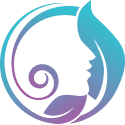Mastitis: Causes, Symptoms & Treatment
What is Mastitis?
Mastitis is an inflammatory condition within the breast, most commonly caused by a blocked duct. When a duct becomes blocked, milk seeps into the surrounding breast tissue, triggering an inflammatory response.
In some cases, an infection can develop from an inflammatory episode. It is important to note that mastitis does not necessarily mean that you have an infection – in most cases, it is simply inflammatory mastitis, even if you develop a fever.
Causes of Mastitis
The exact cause of mastitis is unclear, but it is believed that the following contribute to its development:
Tight bra or clothing
Long periods between breastfeeding/pumping
Abruptly stopping breastfeeding/pumping
Decreased chest and shoulder flexibility
Poor posture
Milk stasis
Latching difficulty
Signs & Symptoms
While the signs and symptoms of mastitis can vary from person to person, the typical symptoms include:
Thickening of the breast tissue or a breast lump
Breast is pink to bright red in color
Breast swelling
Pain in and surrounding the breast
Flu-like symptoms such as fever and chills
Shiny-looking breast skin
Generally feeling unwell
What to do if you develop mastitis
1. Continue to Breastfeed/Pump
Don’t be scared to continue breastfeeding or pumping from that breast. In fact, you should continue feeding at your regular schedule to prevent further milk stasis in the affected breast. While it is important to drain the breast, please don’t go crazy and start pumping repeatedly. Excessively pumping can cause further trauma and inflammation of the breast.
It is important to note that the feeling of fullness/heaviness in your breast is a result of inflammation and not from being full of milk. So, while pumping or breastfeeding, don’t be surprised if you only have a little milk.
2. Massage
You shouldn’t aggressively massage your breast and try to “break down” blocked ducts. Breast tissue is not a muscle. It is very delicate tissue, so aggressively massaging the area with deep and hard pressure can trigger more inflammation and pain. Gently massage the breast and surrounding tissues, to reduce swelling and pain.
Avoid massaging towards your nipple. Instead, massage away from your nipple toward your armpit to stimulate your lymphatic system. Swelling/congestion due to mastitis cannot be cleared from the nipple, as the congestion is not within your breast ducts but in the surrounding tissues.
3. Hot and Cold
You can use either mild heat or cold to provide you with some pain relief. Try both and see what feels best for you.
4. Pain Relief Medication
Speak to your pharmacist for recommendations about anti-inflammatory pain relief medications.
5. Consult with a Specially Trained Therapist
Our therapists are specially trained to treat mastitis! As mentioned above, mastitis is an inflammation of your breast tissues. Therefore, treating this condition is aimed at reducing inflammation.
Our therapists use a variety of techniques to reduce your inflammation and in turn your swelling and pain. Interventions typically include:
hands-on techniques, such as myofascial release and lymphatic drainage
individualized exercises to address any postural and flexibility issues
education to address the underlying causes and prevent future mastitis episodes
Book Appointment
We offer treatment for mastitis in our Midtown and Upper West Side offices in New York City.
Reach out to us to schedule an appointment by using our contact form or by calling us directly at (646) 678-3034.
If you have additional questions, please don’t hesitate to book a FREE 15-minute consultation call with one of our therapists.
FAQs
Can Mastitis be treated with antibiotics?
Yes and no! When the inflammatory episode of mastitis turns into infectious mastitis then antibiotics are required. However, for inflammatory mastitis antibiotics are not required.
In addition, antibiotics do not address the underlying cause of it, and without proper management and guidance, mastitis may return.
When should I consult with my doctor?
You should promptly consult with your doctor if ….
Your symptoms continue to worsen after 48hours
Your symptoms show no sign of improving after 48 hours
You are vomiting or have a high fever
Is pain from breastfeeding normal?
Many mothers do feel some discomfort during breastfeeding when they haven’t breastfed before. However, long and lasting pain during breastfeeding is not normal. For more help and advice on postpartum care and treatment, check out the services we offer here: Postpartum Care & Assessments

